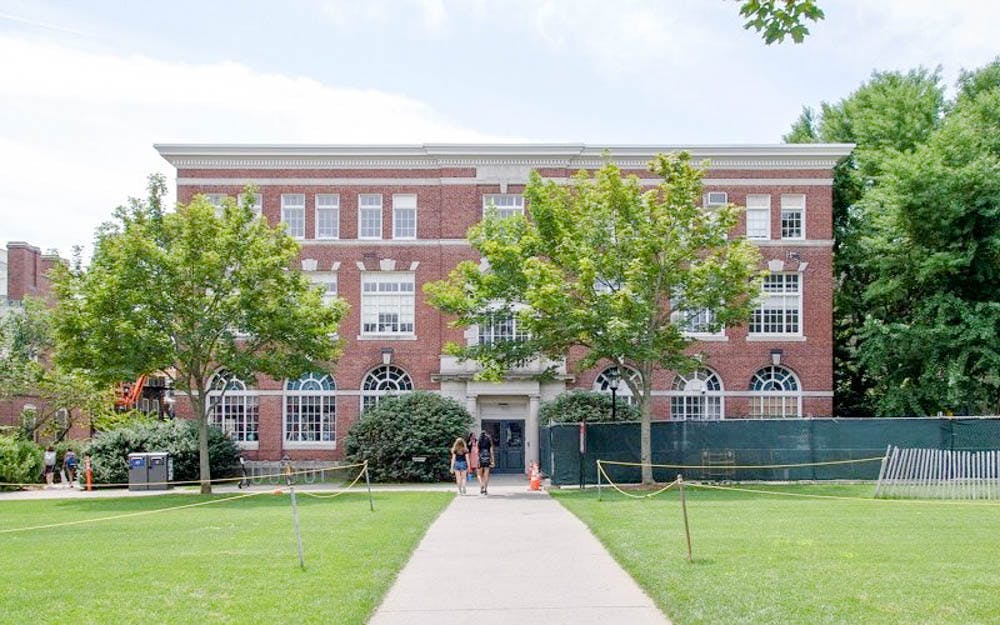The University has begun the design phase of the Lincoln Field Building renovation, which will increase accessibility and optimize the space for the department of Earth, Environmental and Planetary Sciences.
The University has allocated $11.1 million for the project, which will allow for “a significant, but partial renovation” that should be completed during summer 2021, said Associate Provost of Academic Space Rod Beresford.
The design phase of the renovation began after the University selected the Kennedy & Violich Architecture firm last summer. This phase will continue until May 2020, with construction starting the month after.
The main priority of the renovation is to improve the Lincoln Field Building’s accessibility, as it is currently not compliant with the 1990 Americans with Disabilities Act and other fire codes, said Greg Hirth, professor and chair of Earth, Environmental and Planetary Sciences.
The Lincoln Field Building is one of six buildings that the University identified in 2015 as priorities for renewal and renovation, said Vice President for Facilities Management Michael Guglielmo.
“The biggest challenge is that as time has gone on, (the Lincoln Field Building is) no longer aligned with the current needs and the use of the department. So it’s gotten to the point where it is functionally obsolete,” Guglielmo said. “So programmatically it’s very challenging to serve the needs of the department.”
The building’s existing space “doesn’t have this kind of open, friendly attitude to it,” Hirth said. “If you look at any kind of modern science building or modern research building, you can see that there’s like a flow to the building to allow people to interact a lot more and that type of vibe would be awesome to see in that building.”
Significant elements that will be added to the building include an easily accessible exit stairway, an elevator and new restrooms, Guglielmo said. The interior spaces will also be reconfigured, although the design team has not yet decided the exact layout of the space. The discussions about the renovation aim “to make sure that we’re putting the most amount of value back into the building” while optimizing the space for departmental needs, Guglielmo said.
The design team is currently meeting with Hirth, as well as DEEPS staff and other occupants within the building, facilities operation staff and the facilities sustainability group to “make sure what we’re doing is in line with our sustainability goals, … our operational goals and more importantly … with the academic priorities for the occupants of the building,” Guglielmo said. “Then we try to balance that all against the overall project, budget, scope and schedule.”
Hirth said that he appreciates the input DEEPS has had in the renovation process so far, calling it “a collaboration on how to renovate space to maximize our ability to do the research, outreach and teaching.” DEEPS will continue to have an active role throughout the renovation.
DEEPS will move out of the building for the duration of the construction, Guglielmo said. During that time, the department will be relocated to “swing spaces” where faculty can continue their research and teaching, Hirth said. These swing spaces will likely be Arnold Lab and Norwood House, Beresford wrote in a follow up email to The Herald.
Despite the complications of moving out of and into the building, Hirth looks forward to the renovated space. To have a “really updated space, that’s a great advertisement for graduate students. It’s a great advertisement for potential faculty members.” Hirth hopes that having a state-of-the-art building will give people a stronger first impression of DEEPS.
“Brown has made great strides in increasing the amount of renewal spending,” Beresford said. But “this campus still has a lot of needs in terms of updating facilities,” he added. “From my perspective, I’m pleased with the amount of progress Brown has made in this, and I’m hopeful that we’re going to continue to be able to increase the renewal spending and bring this campus up to not just fully accessible, but also high-quality spaces for support of the academic mission.”





